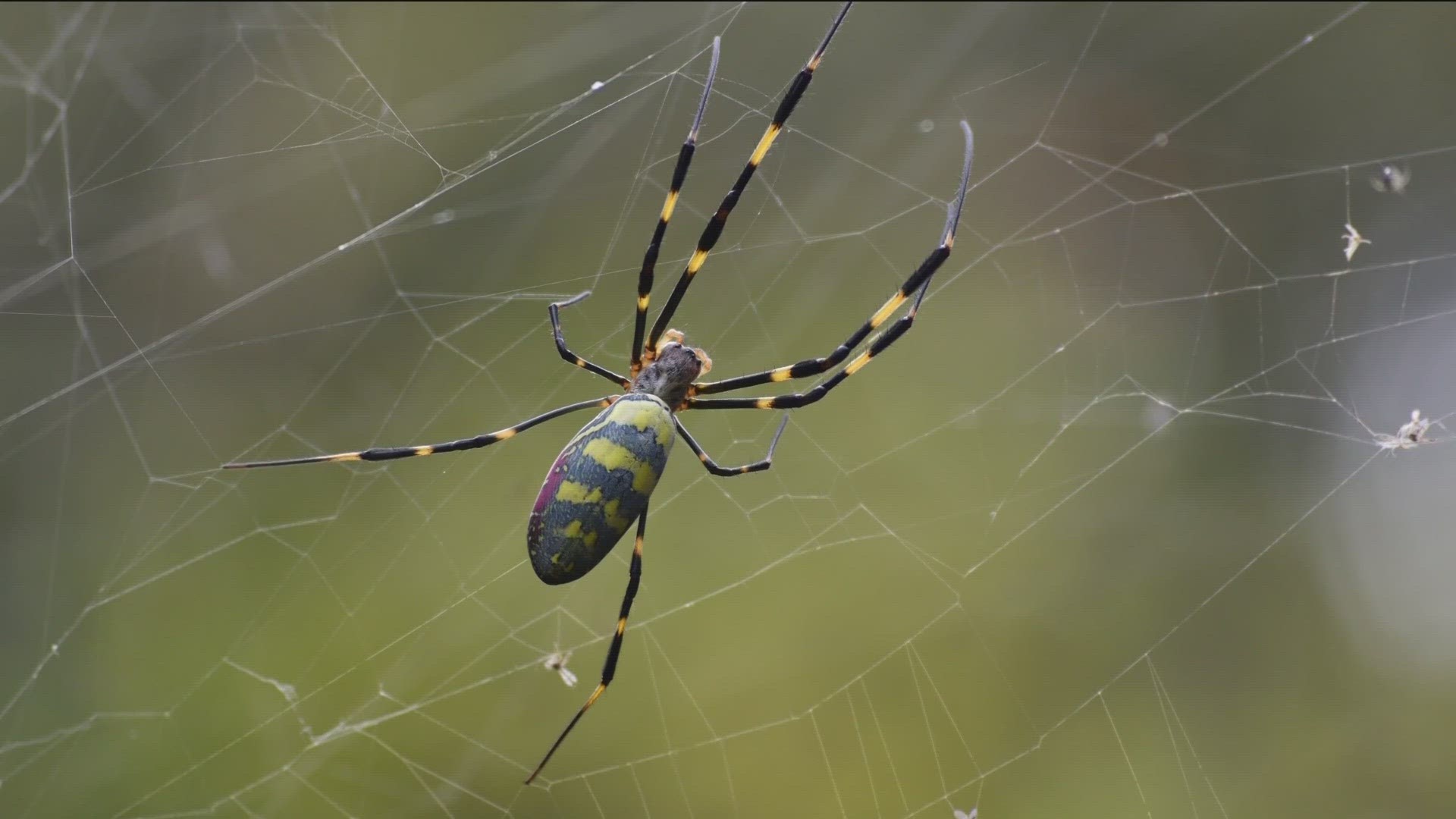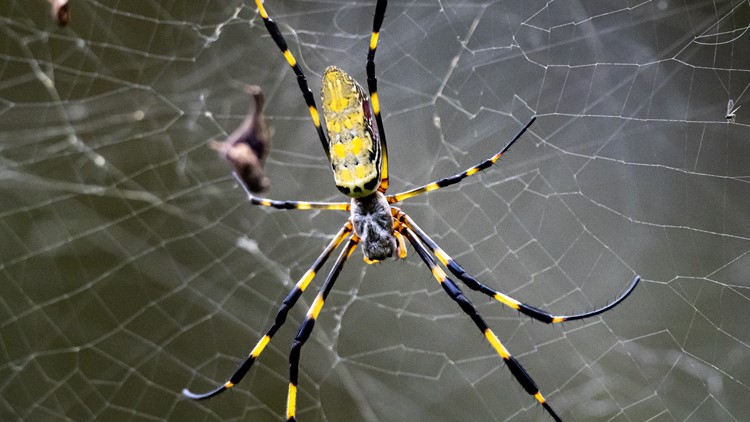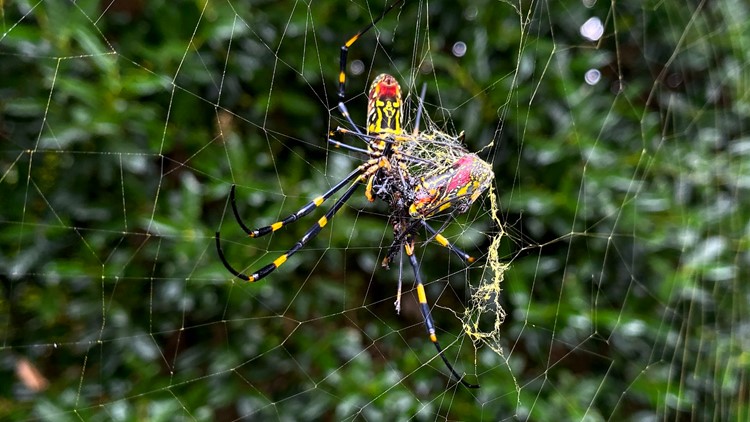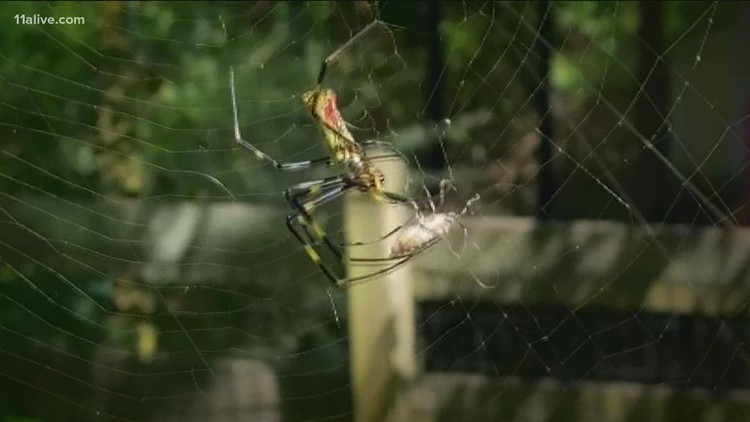ATLANTA — If you happened to spend some time outside on this beautiful Labor Day weekend in Georgia, there's probably a good chance you spotted one of these creepy crawlers hovering above you in their webs.
They're not new to Georgia, but the big, bright and colorful eight-legged Joro spider is certainly an attention grabber to all those that notice them at this time of year as they reappear once again. The invasive species is originally from East Asia, but they now dominate communities across north Georgia and metro Atlanta.
What to know about the Joro spider
- A few years ago, the Joro spider did not exist in Georgia, believe it or not. They came here from Asia, likely as stowaways on shipping containers traveling on freighters and trains until they arrived at the port of Savannah.
- They first appeared in the United States when they showed up in the Peach State in Madison County in 2014, according to research conducted by UGA.
- Joro's actually grow throughout the summer, but you don't notice them until the fall when they reach their full adult size of right around four inches. They are huge spiders.
- The one thing to know about the Joro spider is their lifespan as the spider you will see in webs outside your homes and in the woods is not actually very long. They'll start showing up in late August before dying off in late November to early December.
- Joro spiders are not poisonous! They may instill the utmost fear in you when see them perched high above you, but they're merely harmless. They do have venom, but enough to kill their prey and not harm humans, outside of some redness and potential blistering if they bite you.
- But they are more scared of you than you are of them. They are super skittish and incredibly shy, just click on our previous story that describes how they reacted to other spiders when put under stress.
- The spiders themselves might not be a pain, but their webs surely are. They come from a family called golden orb-weavers -- meaning they create exceptionally strong, multi-layered webs that are a nuisance to get off you if you happen to walk into one.
- The females are much larger than their male counterparts. However, it's fairly common for several male spiders to actually be nestled into the same web as the nearly 4-inch female spider. Just gives me the creeps thinking about it.
- The Joro spider lays their eggs before they die in the fall. They then hatch in the spring before they grow to full size by late summer. Inside their cocoons, a single sac can contain 400-500 eggs which can travel 50-100 miles to help spread their population. The eggs get blown by the wind and can latch on to different structures until it's time to hatch.
- Despite being an invasive species, the Joro spider isn't disruptive, UGA researchers say. They help control insect populations, get eaten by other predators and aren't harmful to humans. They're mostly just like any other native spider, except they just look a lot scarier and sit in much larger webs. Their success as an invasive species is due to their success in being able to reproduce and live in harsh environments, not their aggressive behavior. Invasive does not mean aggressive, one UGA researcher said.
- Experts say if their webs are bothering you and become a problem around your house, you can knock the web down instead of killing the spider. The likelihood of them spinning a web in the same spot is unlikely. But, it's your choice -- the Joro spider isn't going anywhere so bringing out that pest spray to kill one won't make even the slightest difference in their population. Whatever makes life easier.







